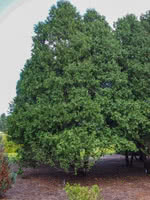Mon-Fri 9am - 5pm Mountain time
Balsam Fir vs Eastern White Cedar (Arborvitae)
Abies balsamea
Thuja occidentalis
Balsam Fir - best known as a "Christmas tree" - doesn't just look great in living rooms; it's a terrific tree for your yard too!
This fir grows tall and narrow. Balsam Fir is cold hardy, shade tolerant, and will thrive in most soil types and moisture levels.
Eastern White Cedar is a slender growing conifer often used as a decorative tree or a hedge. This tree is an effective privacy screen even in winter and a great long term solution to urban crowding or a drab yard.

